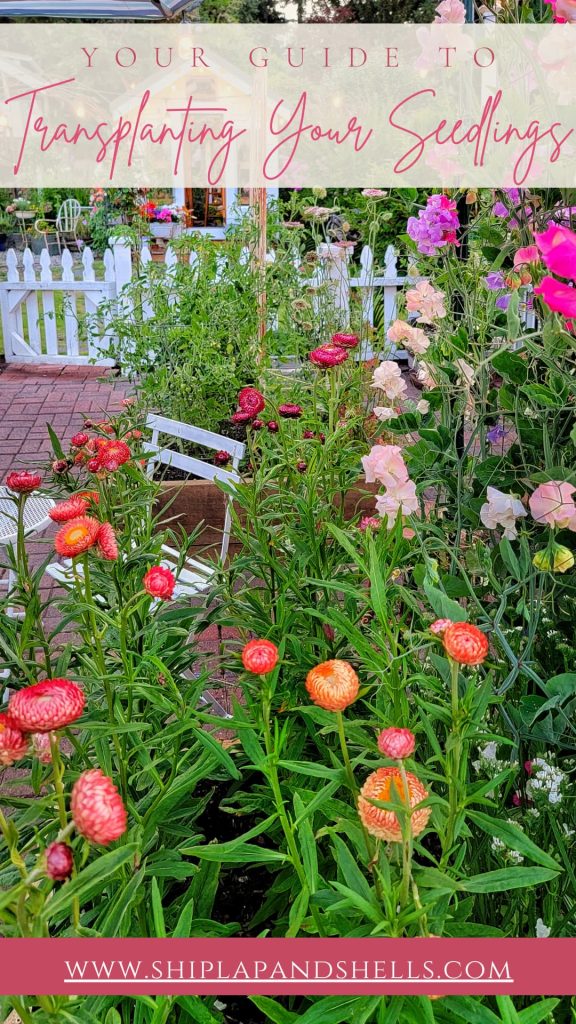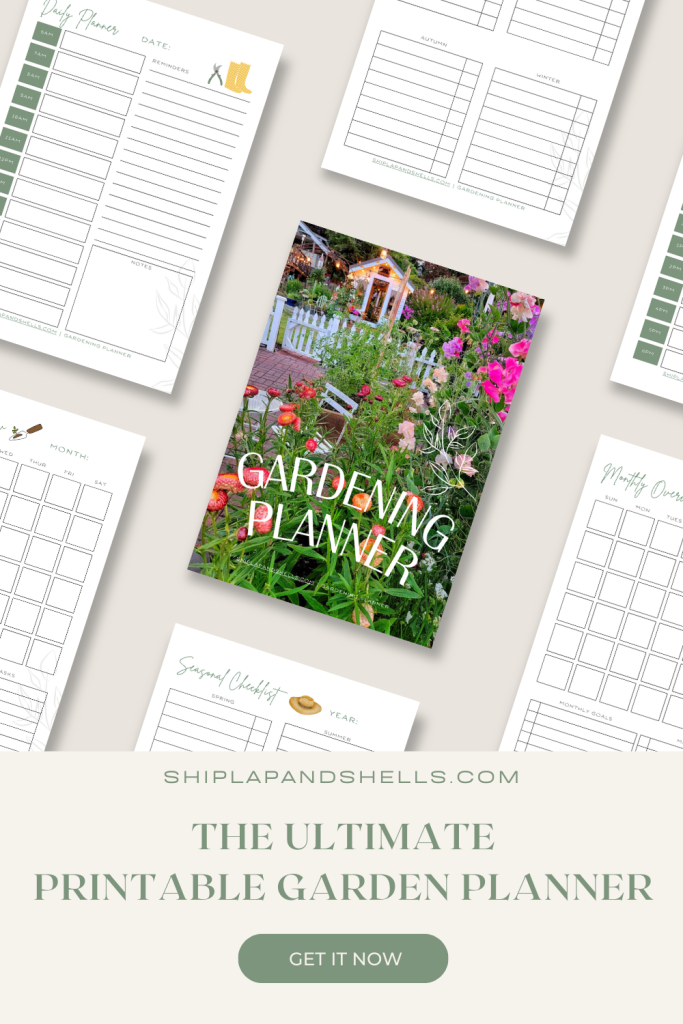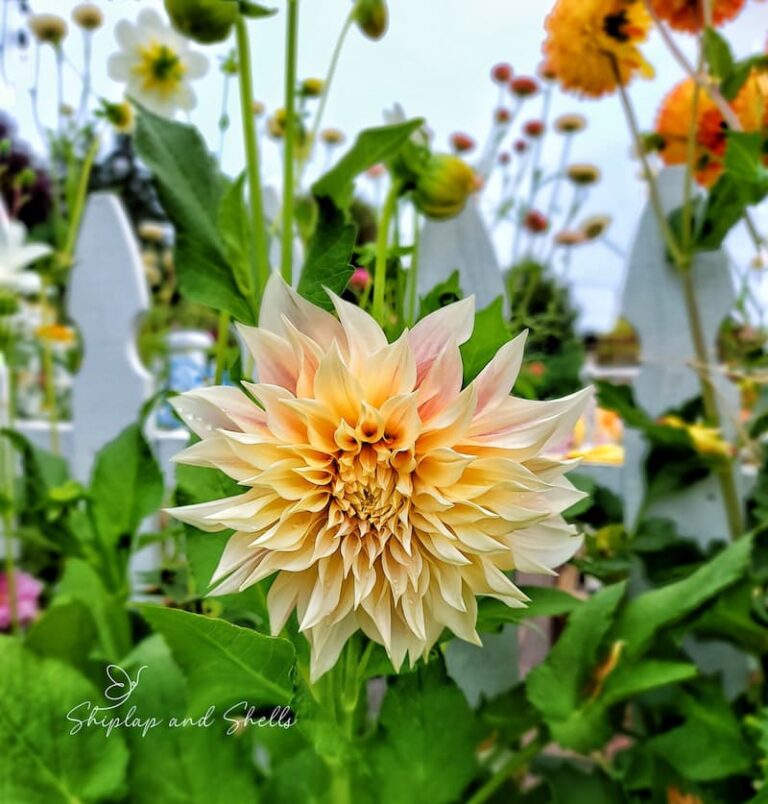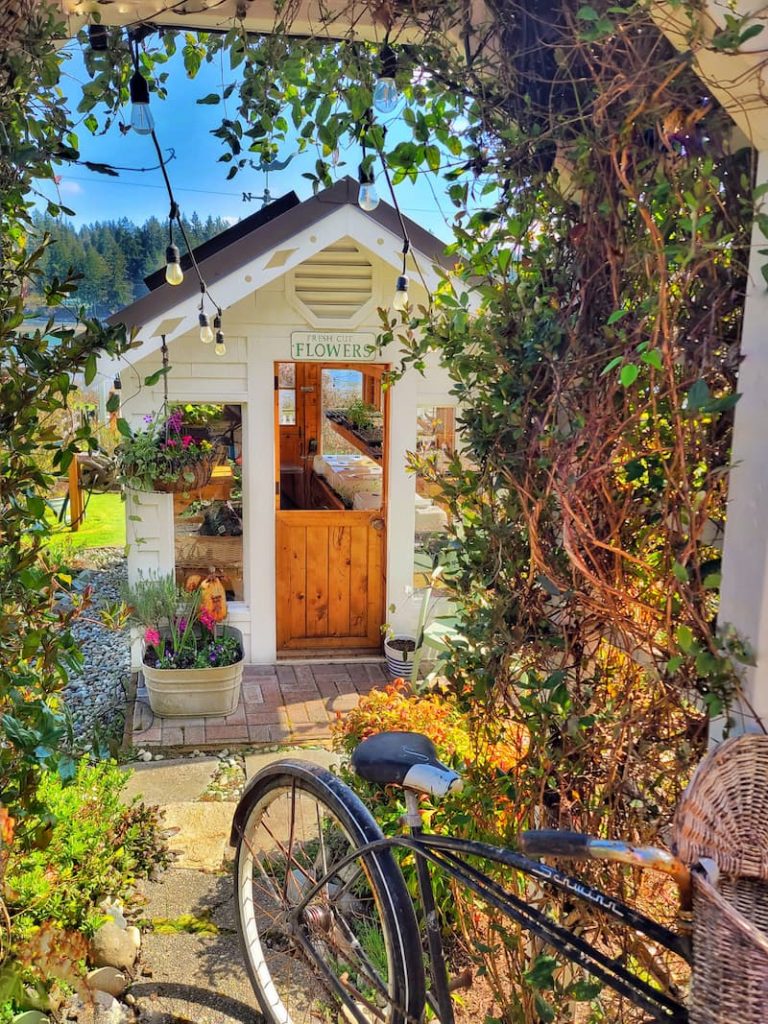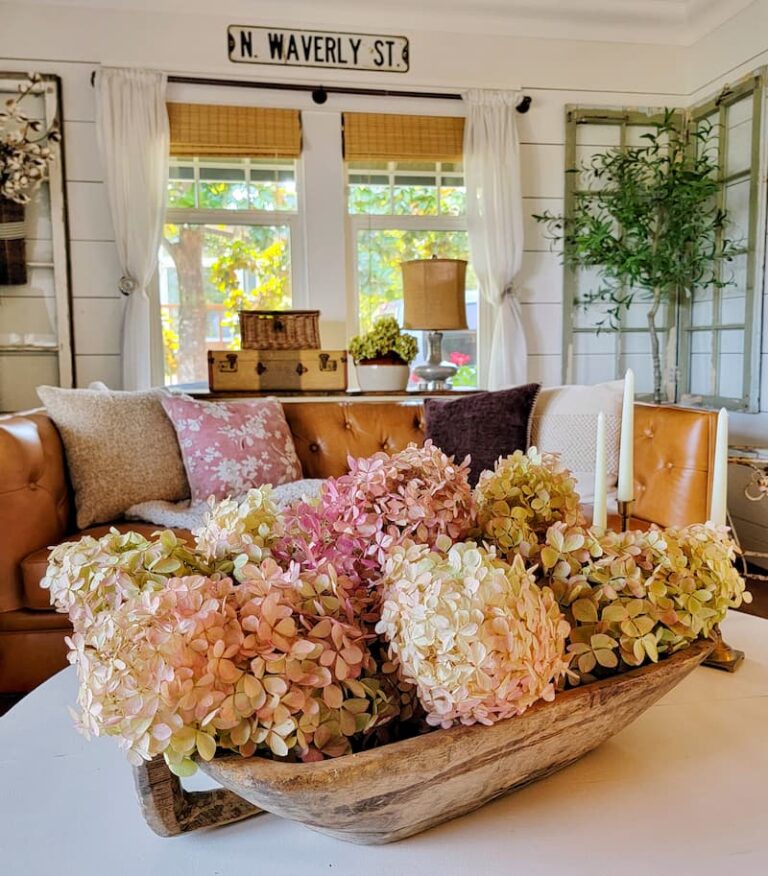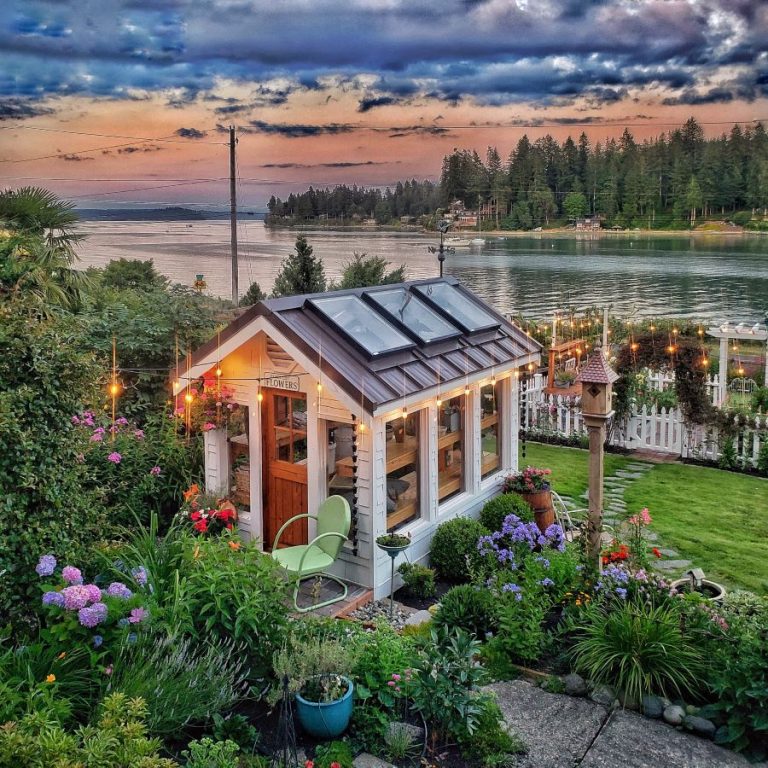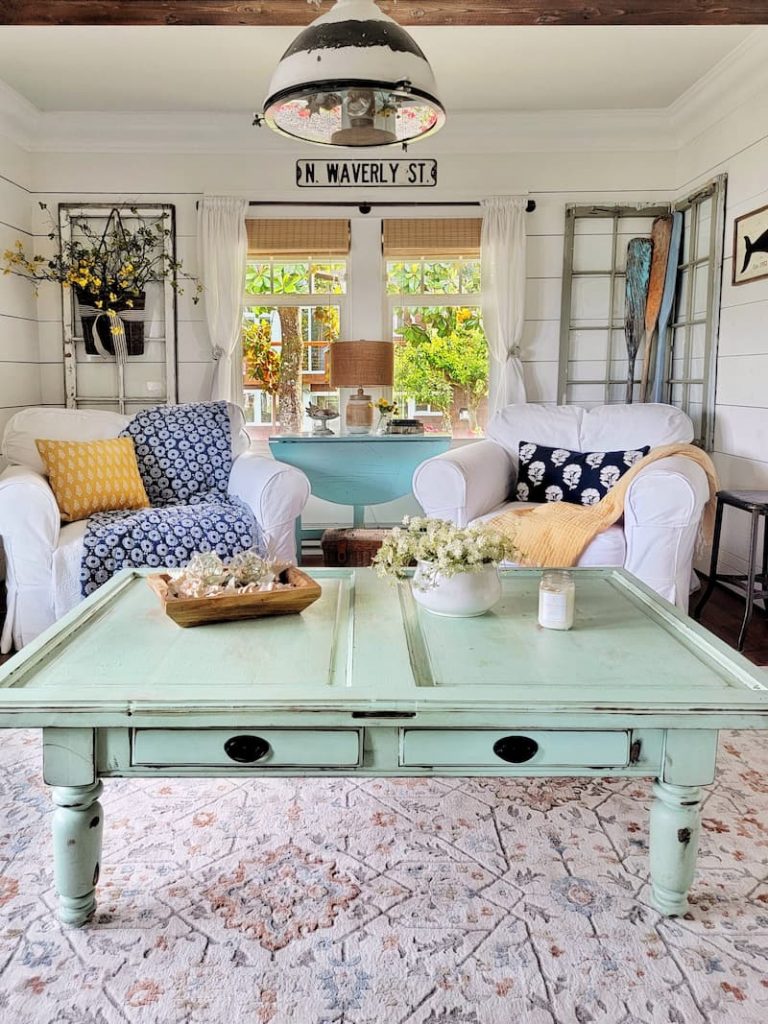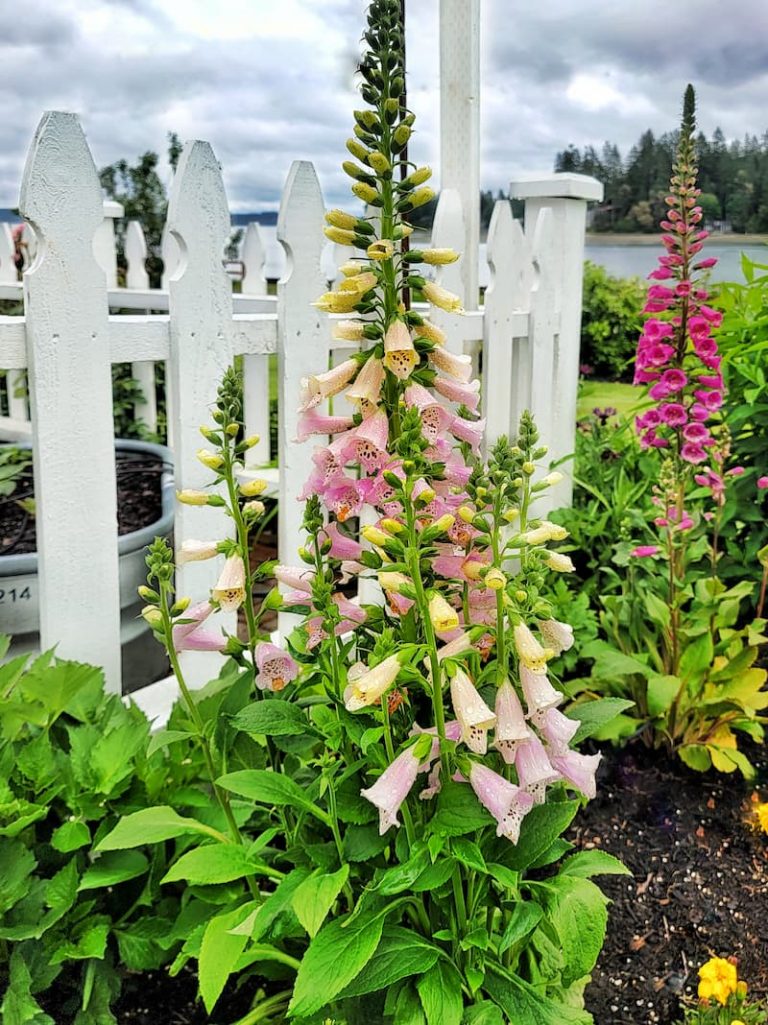How to Safely Transplant Flower Seedlings: Tips for Beginners
Do you know all the ins and outs of transplanting flower seedlings to the garden? This beginning gardener’s guide will share everything you need about safely transplanting your young plants to the cut flower garden, including the timing and how-to tips.
There’s nothing more rewarding than the journey of growing tiny seeds that eventually become gorgeous cut flowers in your garden. Enjoying your flowers is even more gratifying, knowing that all that hard work paid off.
One of my favorite tasks as a flower gardener is transplanting my young seedlings into the cut flower garden, which have been growing in my greenhouse for months. This is such an important step in the gardening process.
The optimal timing for transplanting seedlings is essential for strong and thriving plants rather than those stunted and deprived by their roots. As I write this, I’m still debating whether I should transplant my own cut flower seedlings to their new home in the garden this weekend.
It doesn’t matter how many years I’ve been doing this; Mother Nature is in control, not me. So, I usually err on the side of caution. The average last frost date has come and gone, but I still get nervous that it may be too early.
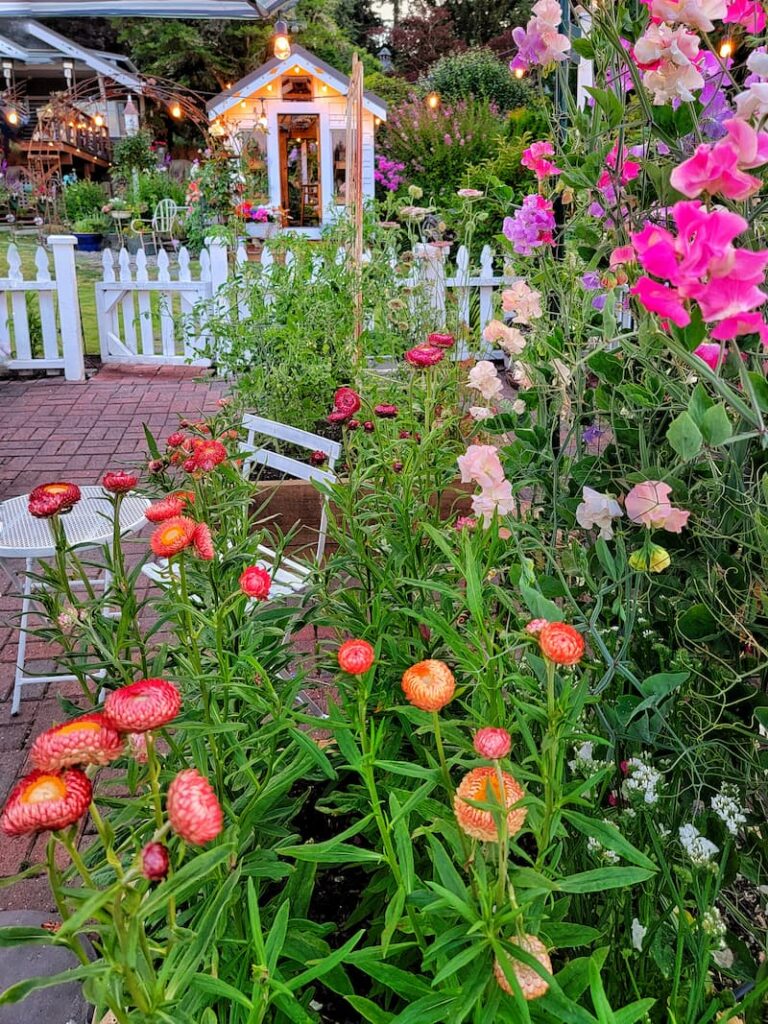
As an Amazon affiliate, I earn from qualifying purchases at no extra cost to you. My blog contains other affiliate links for your convenience as well. Click here to read my privacy policy.
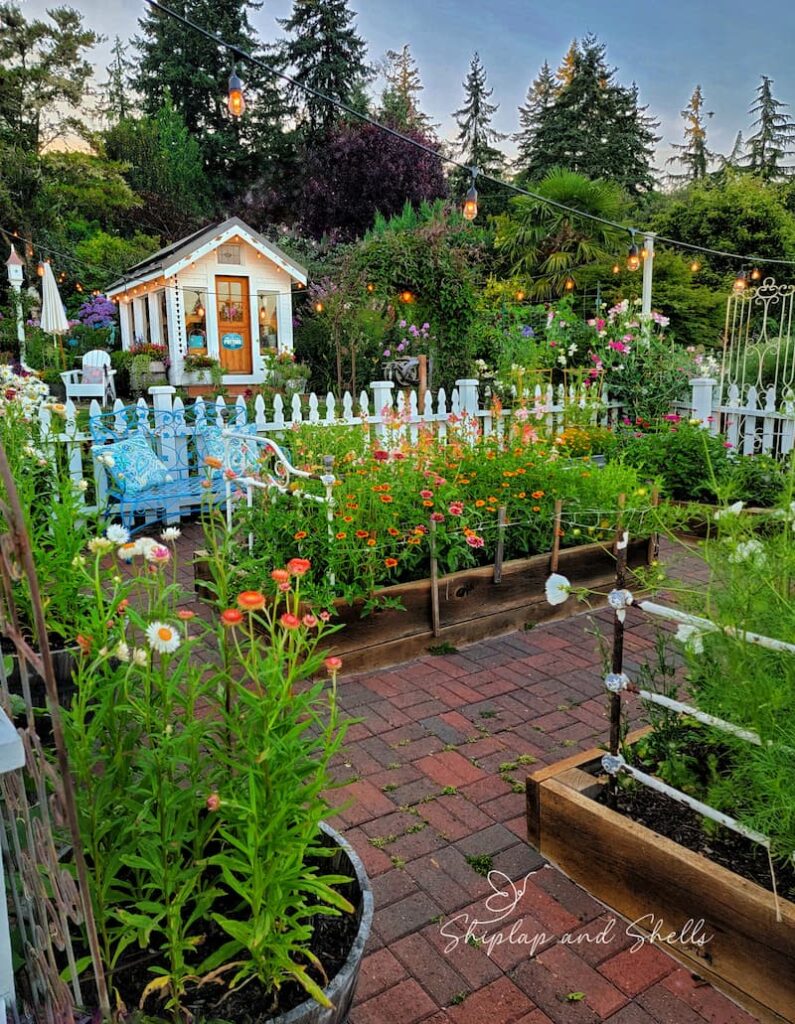
Why Transplant Flower Seedlings While Still Indoors
If you notice that your plant seedlings are running out of room or showing signs of health issues, it may be necessary to transplant them into individual, larger pots or containers while still indoors.
You’ll be surprised by how reducing the competition for nutrients and water will positively affect your seedling’s plant growth. The extra space will help develop strong root systems and prevent the seedlings from becoming root-bound.
Some seedlings will not need to be repotted before they’re transferred to the garden. It depends on the type of pot the seeds were sown in and how large it is.
The type of flower plant also needs to be considered when deciding to transplant your seedlings. Some varieties are smaller, grow slower, and may skip right to the garden when transplanted.
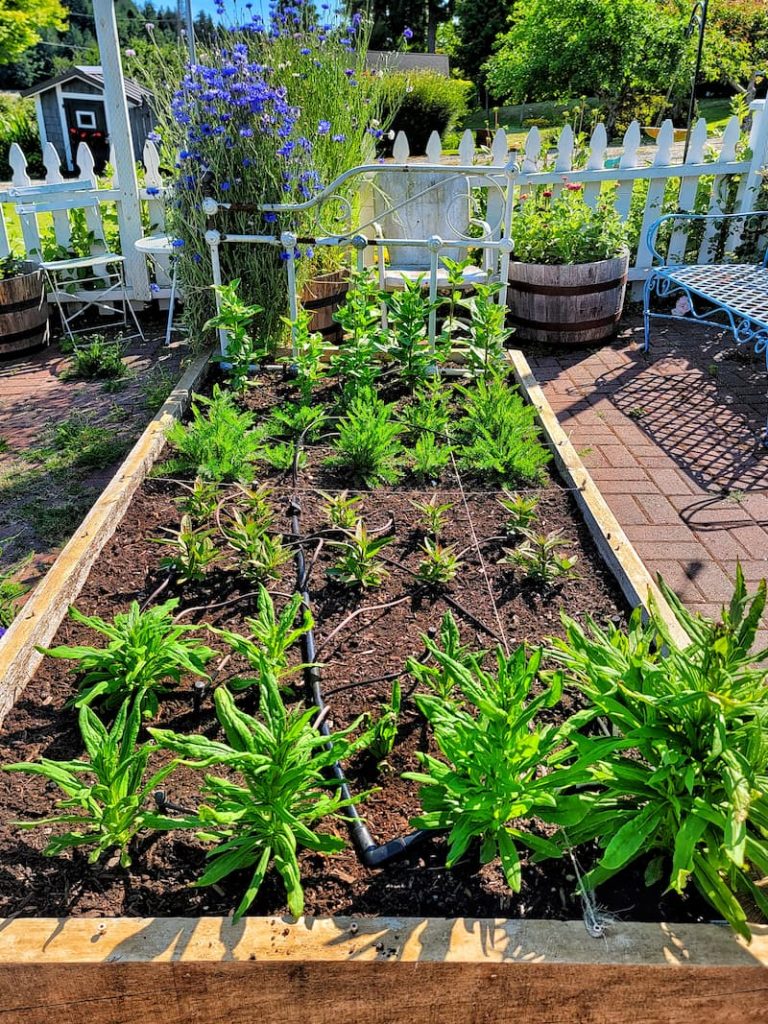
When to Transplant Seedlings
You know what they say: timing is everything, especially in the garden. But how do you know when to move seedlings outside?
The instructions on your seed packet tell you to wait to transplant the seedlings after all danger of frost has passed. If you don’t know your area’s average last frost date, enter your zip code here.
It doesn’t matter how ready your indoor seedlings are as far as plant growth; if there’s a frost after they are transplanted, you will most likely lose them.
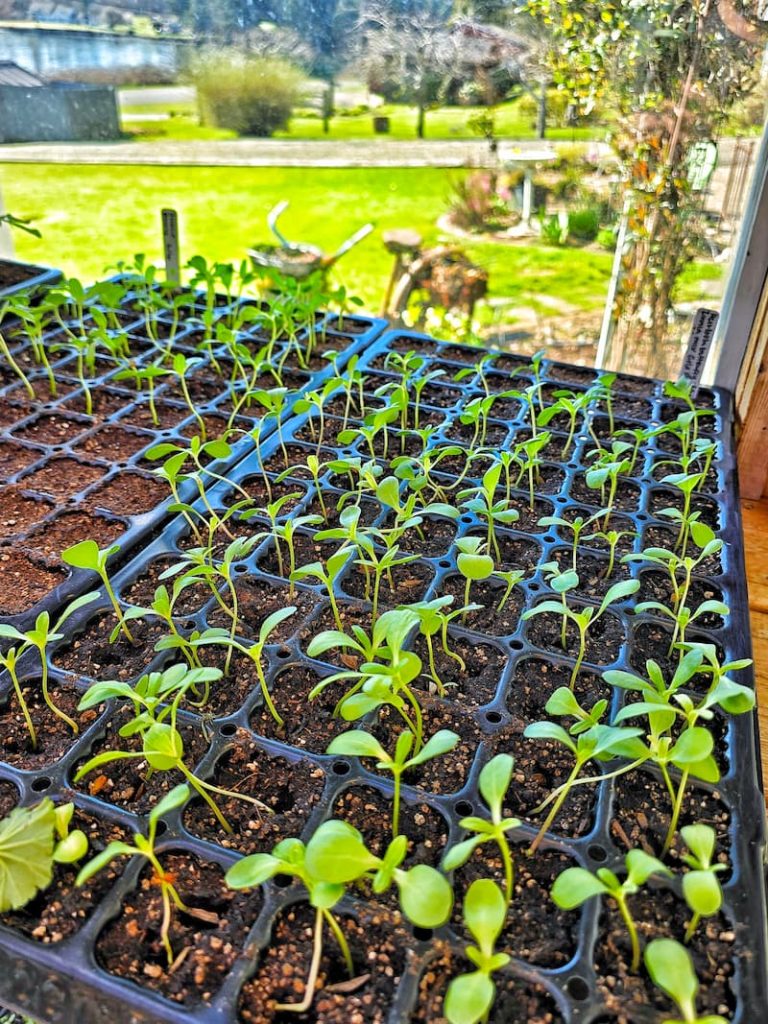
How Big Should Flower Seedlings Be Before Transplanting?
Many beginning gardeners ask, “How big do seedlings need to be before transplanting them to the cut flower garden?”
It’s a delicate balance!
If the seedlings are too small, they may not withstand the outdoor elements of the growing season. If they’re too large, they might suffer from transplant shock or stunted growth.
The sweet spot for most flower seedlings is when they have at least 2-3 sets of true leaves. These leaves appear after the initial seed leaves and are a telltale sign of a seedling’s readiness for the outside world.
At this stage, your seedlings are strong enough to handle the minor stresses of transplanting and have developed a large root system to grow in your garden beds.
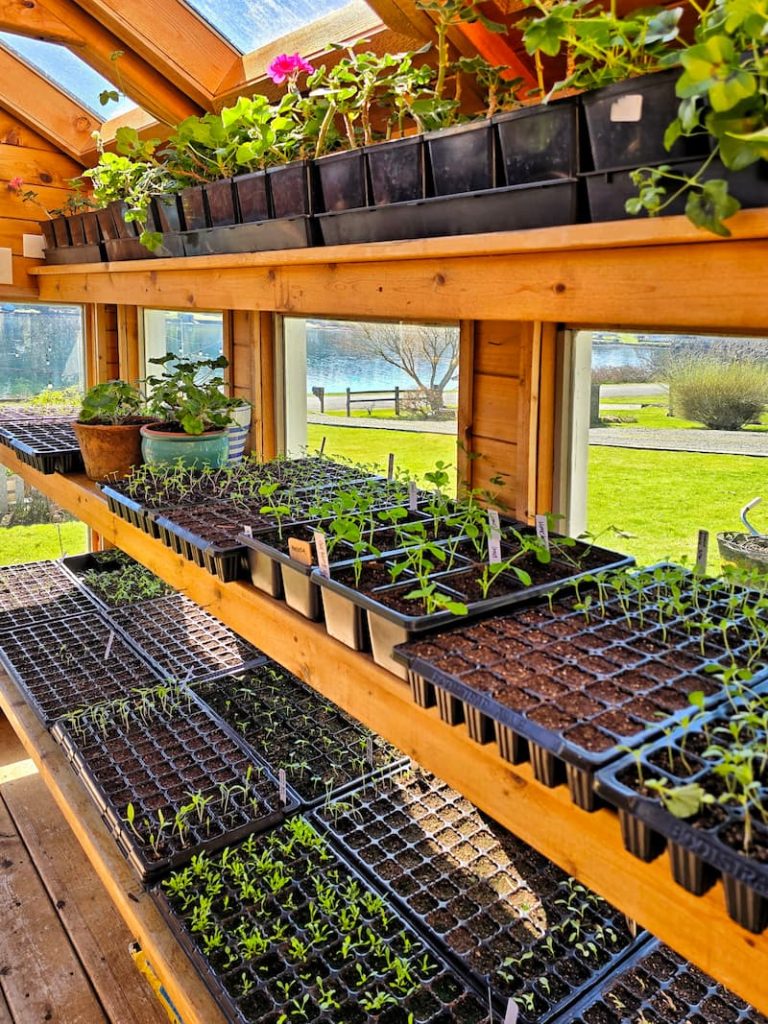
How Do I Know When My Seedlings Are Ready to Transplant?
I’ve already talked about true leaves, but did you know that there are two types of seedling leaves?
The first leaves appear after a flower seed sprouts and are called cotyledons, usually oval or round-shaped. They provide the plant with nutrients until the first set of true leaves emerge.
The best time to plant seedlings outdoors in the garden is when they’ve developed their second set of leaves, the true leaves. This is a sign that they are strong enough to withstand outdoor conditions and ready to spread their roots.
If you see healthy, white roots from the bottom of the container, it’s the right time. Another great way to tell if your seedling is ready for the big step is its sturdiness and strength. Upright growth usually means that these seedlings are ready for transplanting.
Test the root system by gently easing the seedling out of its container.
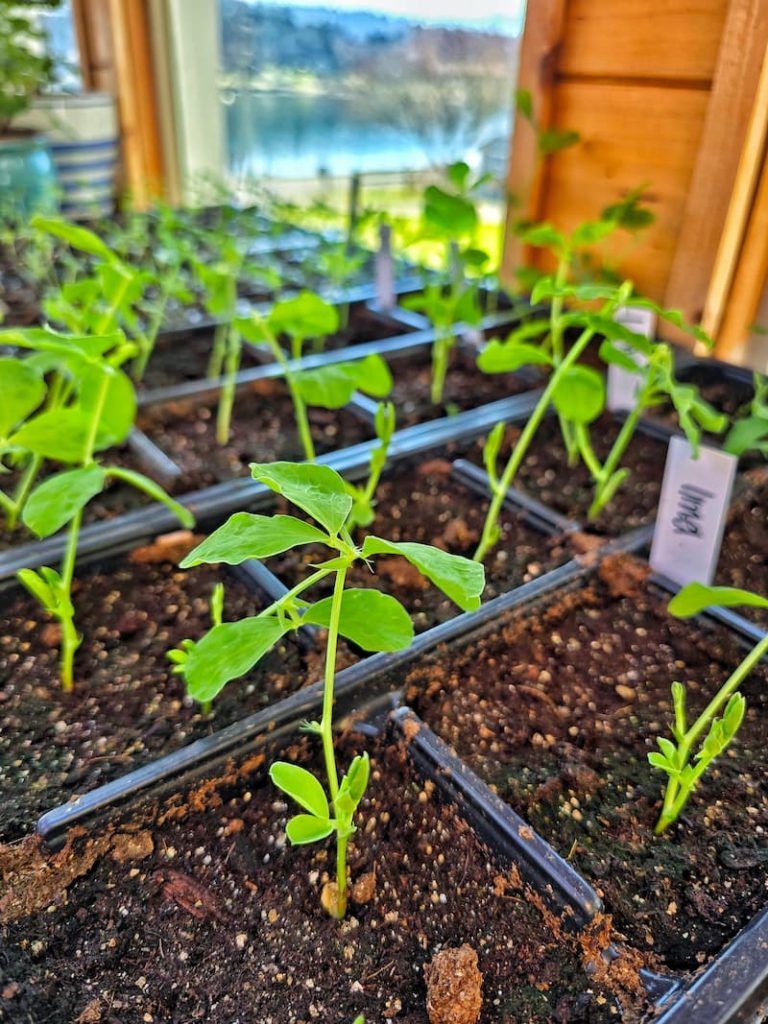
What Happens if You Transplant Seedlings Too Early?
Planting seedlings outdoors too early when they’re not fully ready presents challenges that will hurt their growth and vitality.
If moved to outdoor temperatures before they’ve developed sturdy sets of true leaves and a robust root system, seedlings are at a higher risk of succumbing to the shock of the transition.
This shock will show itself with stunted growth, yellowing leaves, or seedling loss.
Early transplanting also exposes these tender plants to unpredictable weather conditions. This includes frost and strong winds, which seedlings find hard to withstand. Their undeveloped new roots struggle to absorb water and nutrients efficiently, compromising their health.
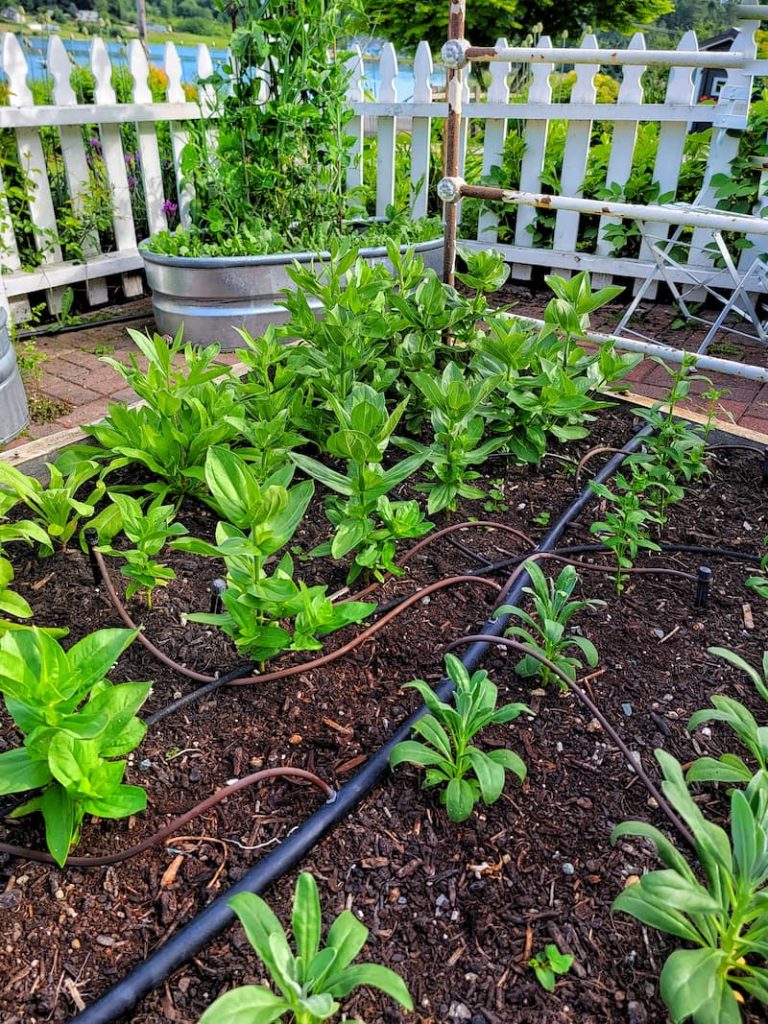
What If You Transplant Seedlings Too Late?
And then there’s the flip side.
Seedlings can become root-bound when kept in their original containers for too long. This is where their roots circle and crowd the pot, suppressing their ability to spread and absorb nutrients and water efficiently once transplanted.
Delaying the transplanting process can limit the seedling’s development, potentially weakening the plants as they struggle to catch up.
Overcrowded seedlings can also compete for limited resources, stressing them and making them more susceptible to disease and pest issues.
Garden Supplies and Tools
Check out my favorite garden supplies and tools for the growing season. Whether you’re looking for potting soil or deer repellent, you’ll find what I use in my own garden.
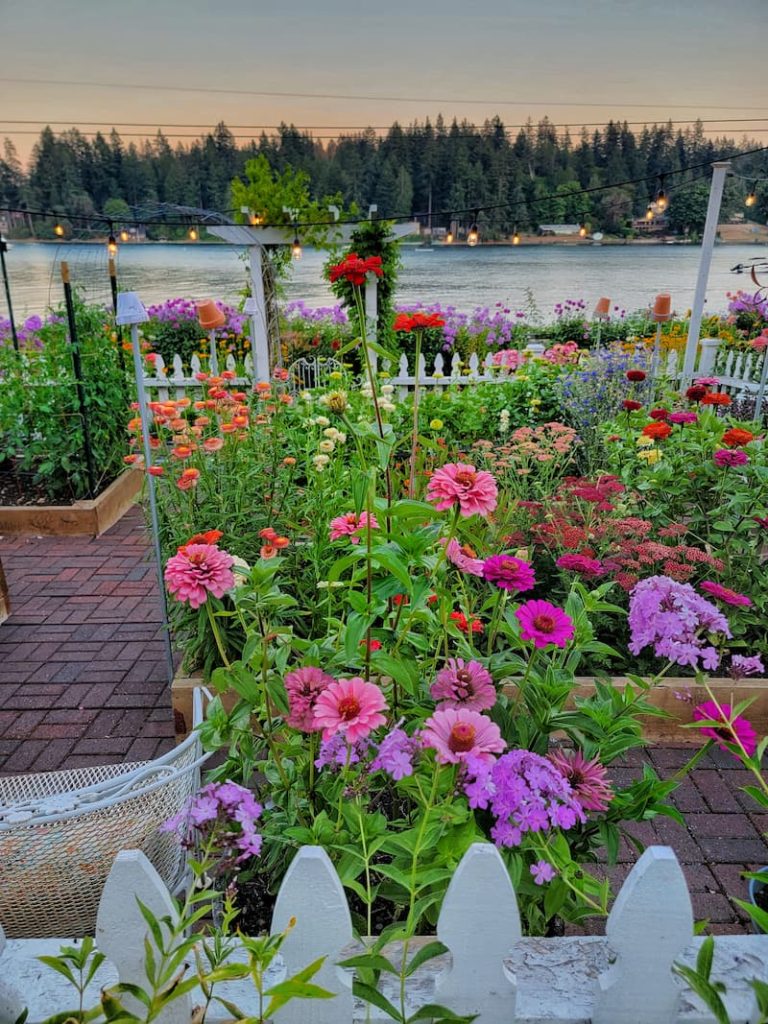
Best Way to Transplant Seedlings Outdoors
The best way to transplant seedlings outdoors is by equally focusing on care, timing, and technique.
Follow along for secrets to safely and successfully transplant seedlings, from preparing the garden bed to the final touches. It’s time to welcome your seedlings to their new home.
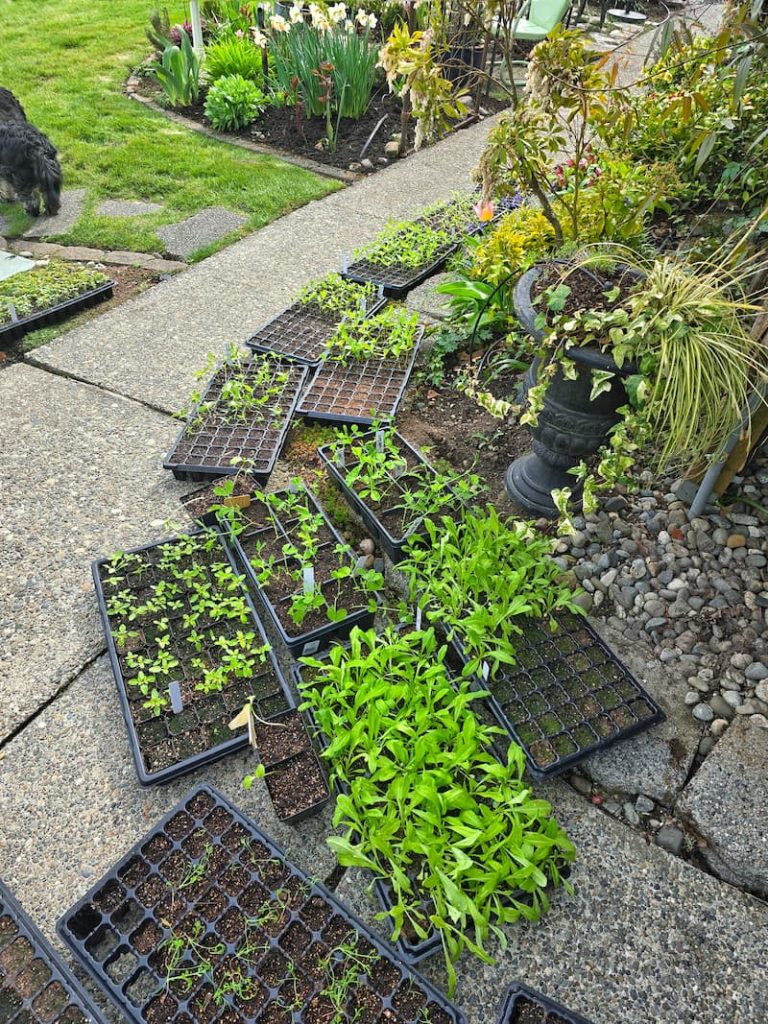
Harden Off Your Flower Seedlings
Before your young seedlings are transplanted outdoors, the “hardening off” process is crucial. This important step gradually acclimates your tender plants to outdoor conditions after being in their protective environment for so long.
Introduce your small plants to the outdoors for a few hours each day, gradually increasing their time outdoors.
Exposure to direct sunlight, wind, and temperature fluctuations will toughen up these young plants. This reduces the risk of transplant shock, a sudden halt in growth that can occur when plants move from the stable conditions indoors to the variable environment outside.
Hardening off your seedlings is the best way to grow well-adjusted, strong seedlings ready for the garden.
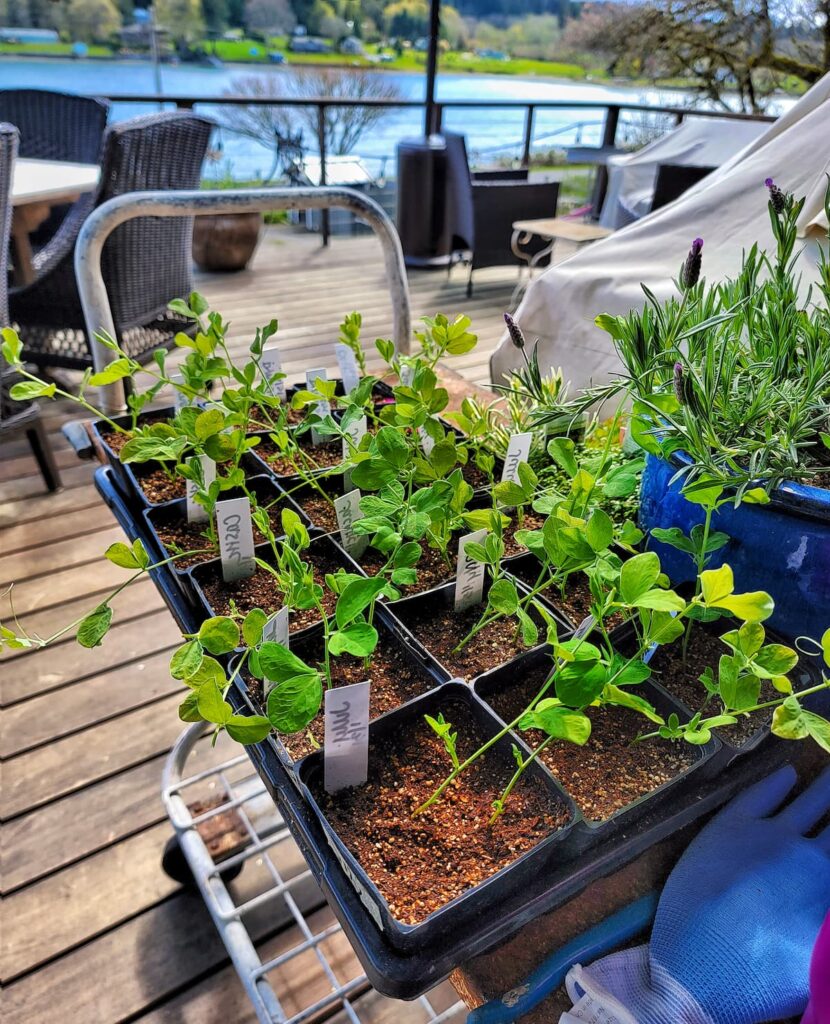
Water Your Seedlings Before Transplanting
Providing your seedlings with a deep watering a day before the transplant will ensure they’re fully hydrated and prepared for the transition. This moisture eases the shock of moving to a new environment and helps the roots to establish themselves in the garden quickly.
However, it’s crucial to balance your watering strategy. Overwatering can lead to soggy roots that struggle to adapt. Water your seedlings gently, making sure they’re moist but not waterlogged.
Find a Protected Spot
Choosing the perfect garden spot for your young plants is not just about aesthetics. It’s about understanding each plant’s unique needs and matching them with the ideal conditions to thrive.
Consider the sun requirements, soil type, and moisture level of each plant needs.
A sun-loving flower planted in the shade may struggle to bloom, while a shade-tolerant plant could wilt in direct sunlight. Remember the plant’s mature size to avoid overcrowding and ensure each seedling has enough room to grow and access nutrients.
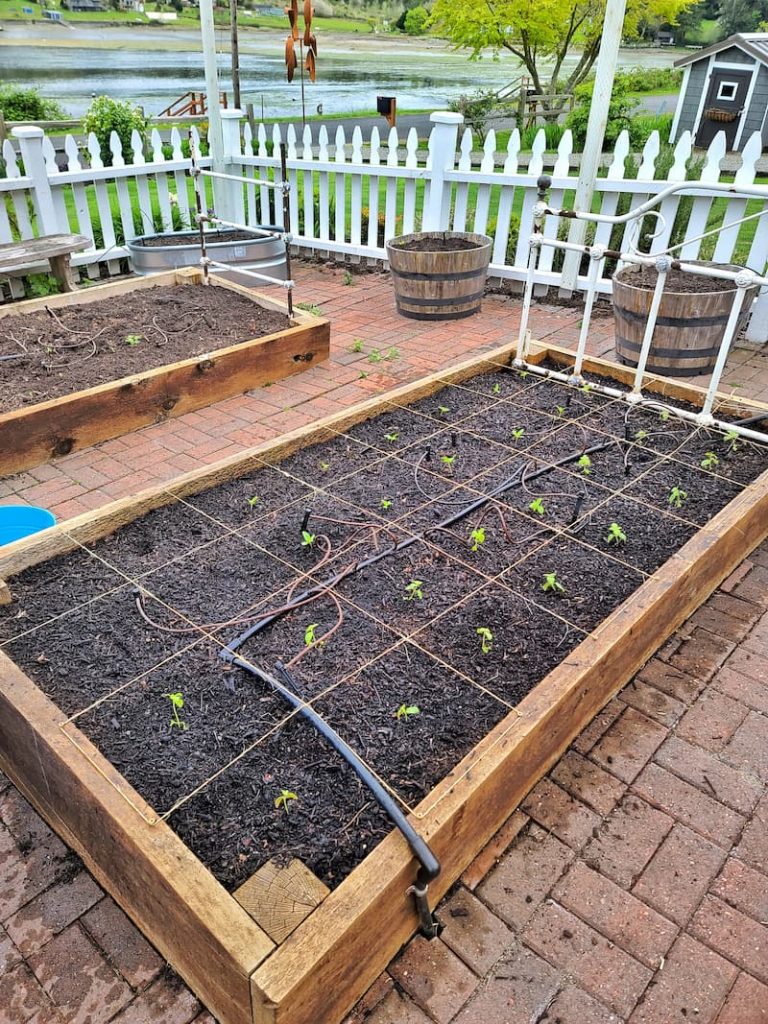
Wait for a Mild Weather Day
When picking a time to transplant your young seedlings to the garden, check the weather forecast for an overcast day with gentle temperatures. This will help protect sensitive seedlings from full sun exposure and extreme heat, which can stress the plant.
Start in the early morning rather than the heat of the day. Mild weather helps retain soil moisture, which is crucial for the roots to establish themselves without the immediate threat of drying out.
Prep Your Soil
It’s a good idea to test the soil’s pH and adjust it with soil amendments according to your plant’s needs, This will help improve its ability to uptake nutrients and thrive.
Prepare your garden bed’s soil with organic matter such as compost or well-rotted manure. This will improve soil structure, enhance nutrients, and boost moisture retention.
Unlike compacted ground, the garden soil should be loose and aerated, allowing roots to spread easily.
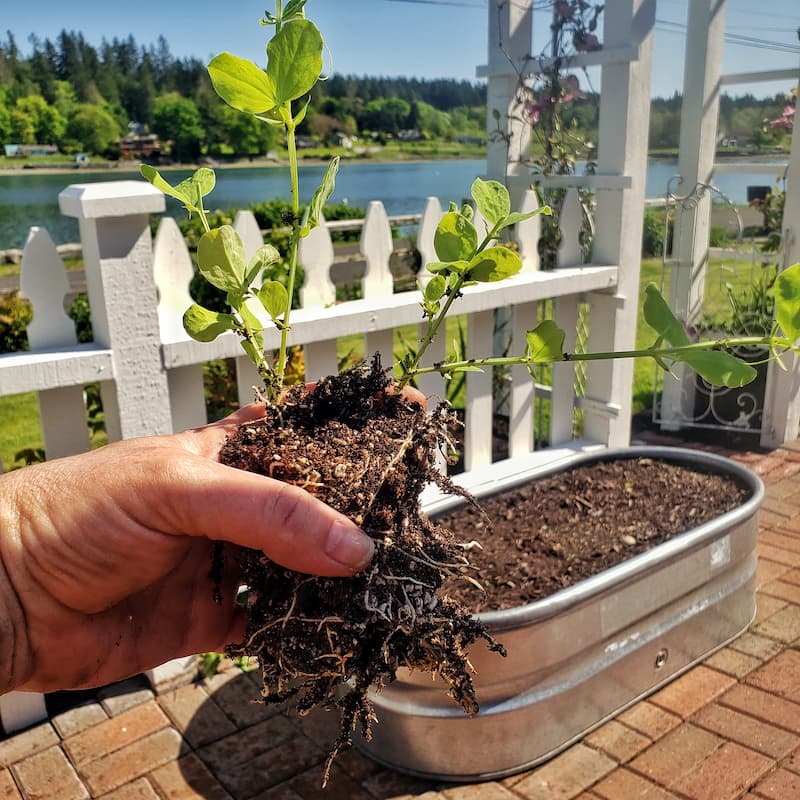
Remove from Seed Trays
When done correctly, removing seedlings from their seed trays sets the stage for successful transplanting. The key is to handle your seedlings gently to minimize stress and damage. Here are some techniques:
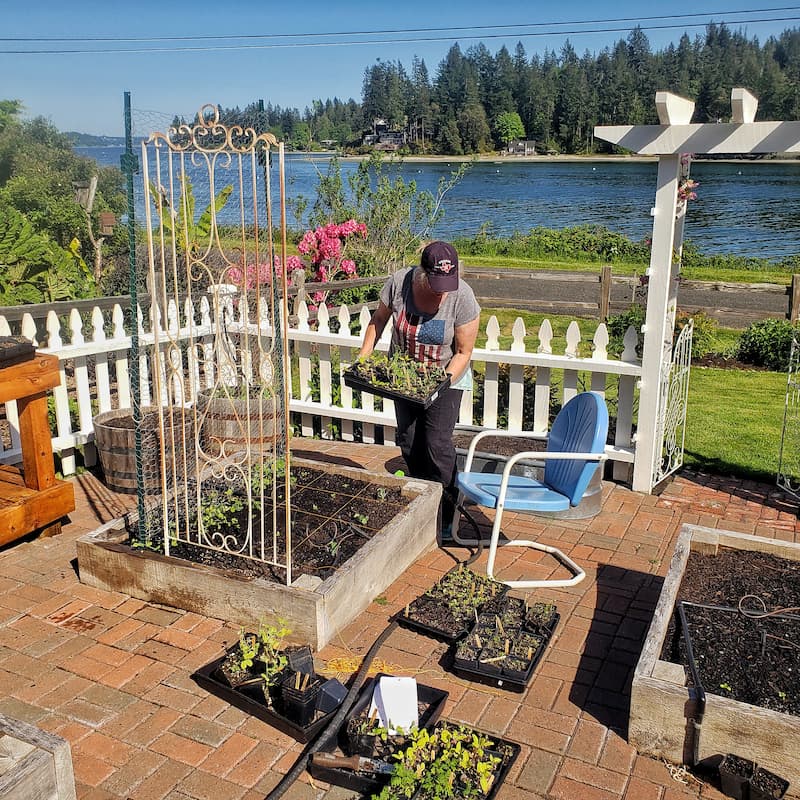
Plant Seedlings in the Garden
You’ve laid the groundwork for your future cut flower garden. Here are some tips to make the transition from indoors to outdoors as smooth and successful as possible.
Digging the Hole
Dig a planting hole in the prepared soil slightly larger than the root ball of your seedling. This extra space encourages roots to spread out and establishes a strong foundation for the plant.
Inspect and Lightly Pull the Roots
Gently remove any circling roots to encourage outward growth. If the root ball is densely packed, lightly pull the roots apart to stimulate them to grow into the surrounding soil.
Position With Care
Place your seedling in a hole at the same depth it was growing in its container, This helps prevent stem rot and supports stable growth.
Backfill the Hole
Carefully backfill the hole with soil, gently firming it around the base of the seedling to eliminate air pockets and ensure good root-to-soil contact. Avoid compacting the soil too much, hindering root growth and water penetration.
Water Generously
After planting, give your seedling a good watering to settle the soil around the roots and provide essential hydration. This initial watering is critical for helping the plant recover from transplanting.
Mulch for Protection
Apply a layer of organic mulch around the base of the seedling to conserve moisture, regulate soil temperature, and reduce weed competition. Keep the mulch a few inches away from the stem to prevent moisture buildup that could lead to disease.
Offer Support
Taller seedlings or those prone to wind damage should consider providing stakes or support to help them stand strong as they acclimate to their new environment.
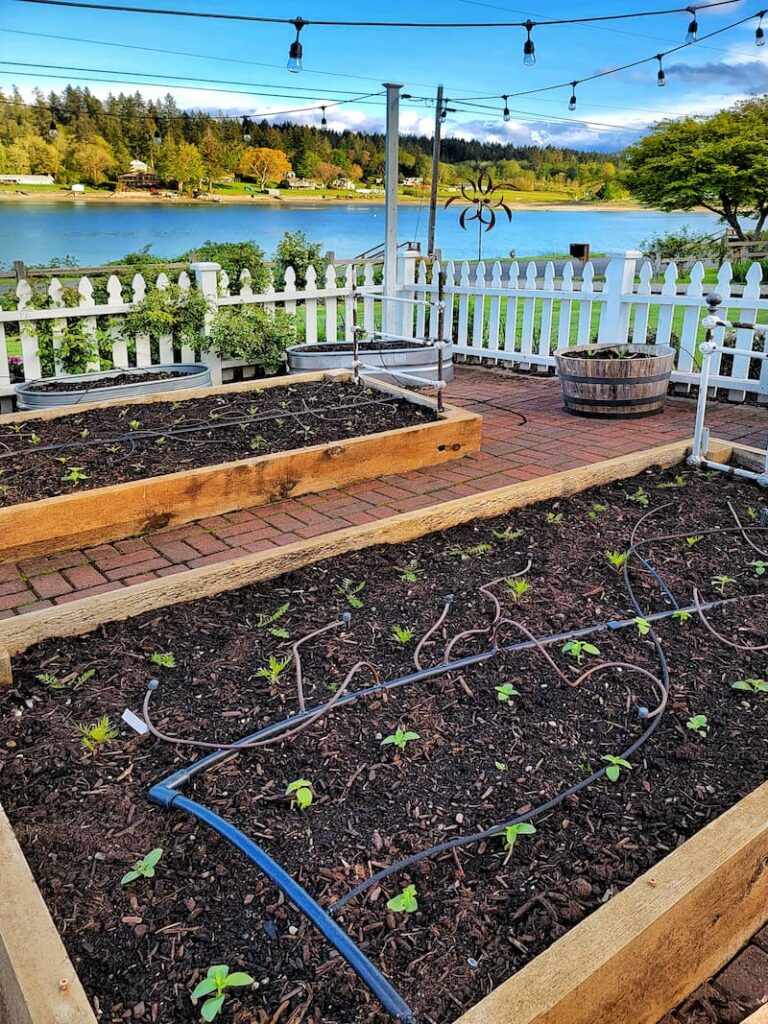
Ongoing Seedling Care
Transplanting flower seedlings is just the beginning of their journey in the garden. As your young plants acclimate to their new environment, they’ll rely on your continued support more than ever.
Watering
Regular watering is essential, especially in the first few weeks after transplanting your seedlings. This is when their root systems strengthen and expand into the surrounding soil. But remember, balance is key. Provide enough water to the seedlings, but avoid overwatering, which can be just as harmful as under-watering.
Monitor the soil’s moisture level to keep it damp but not waterlogged.
Pest and Diseases
Watch for pests and diseases that could damage your flower seedlings. Keep your new plants safe using organic pest control methods and disease-resistant plant varieties in the garden.
Fertilizing
Applying balanced, slow-release fertilizer can give your seedlings the nutrients they need to thrive without overwhelming them.
‘Growing a Cut Flower Garden’ Series
Learn about the ins and outs of growing a cut flower garden this year. Click the button below to be taken to the entire series of blog posts and choose what is interesting to you.
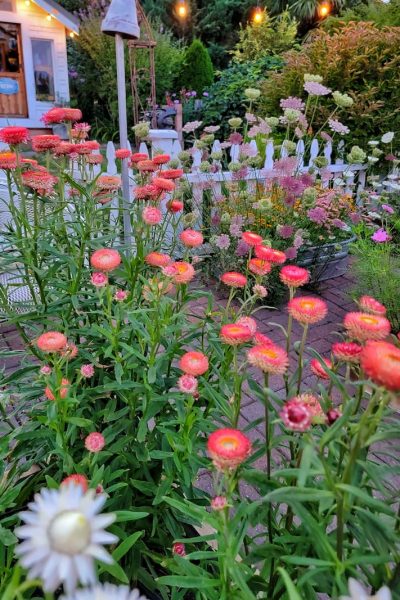
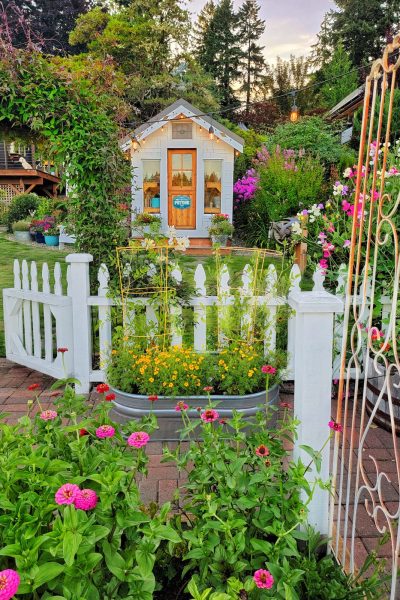
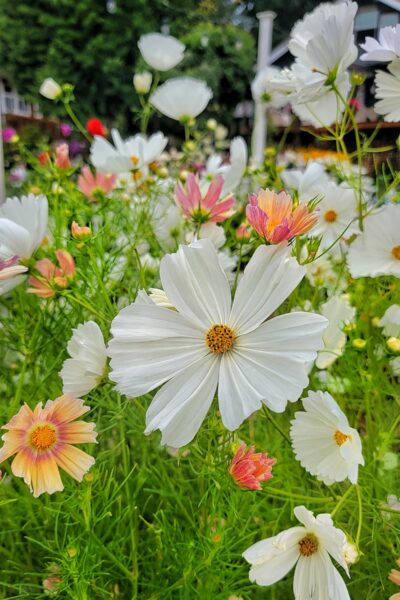
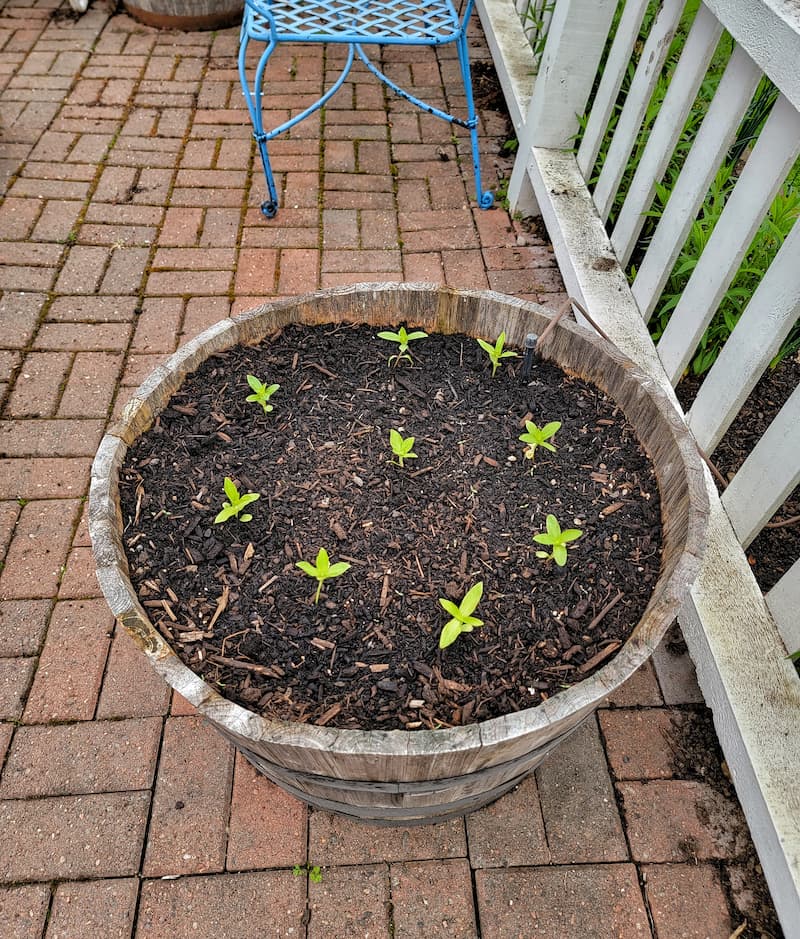
Transplanting Seedlings to Containers
Growing cut flowers in containers is a great option for smaller settings such as patios, balconies, and decks. Gardeners with limited space can still enjoy the benefits of a home-grown garden.
When transplanting seedlings into containers, choose pots with sufficient drainage to prevent waterlogging, which can lead to root rot and other moisture-related diseases.
Use a high-quality potting mix to retain moisture while providing good aeration for the roots.
Consider the mature size of your plants so the container you choose is spacious enough to accommodate the growth of a larger plant without crowding.
After transplanting, place your containers where they’ll receive the appropriate amount of sunlight for their specific growth requirements. Regular watering and feeding become even more important in container gardening because plants depend completely on what you provide.
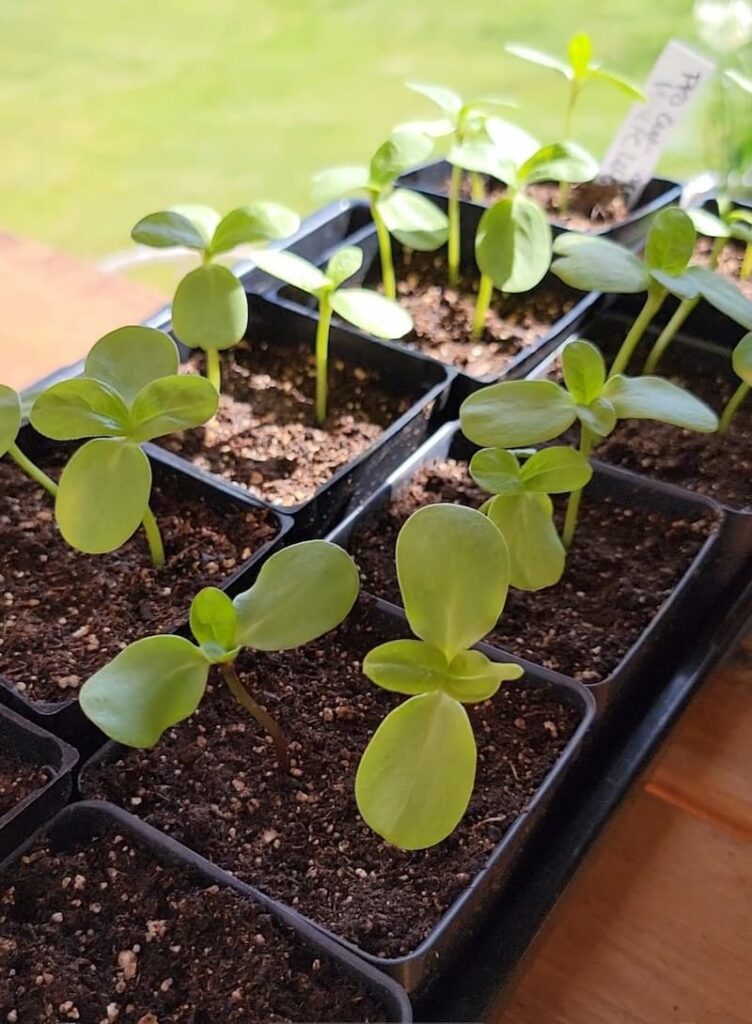
Common Questions About Transplanting Seedlings
How Long Can Seedlings Stay in Trays?
Seedlings should remain in their trays until they have developed a strong set of true leaves, typically the second set that appears. Depending on the type of plant and growing conditions, this set usually develops within 2 to 6 weeks after germination.
Extended trays can lead to overcrowding and competition for limited resources like light, water, and nutrients. This can stress the plants and stunt their growth. The confined space can cause the roots to become bound, circling around the container due to a lack of space.

Do Seedlings Need Shade After Transplanting?
Yes, providing shade for seedlings after transplanting can be an essential step in helping them adjust to their new environment.
After the careful process of hardening off, which gradually acclimates seedlings to outdoor conditions, offering some shade during the brightest parts of the day can further protect young plants in their initial days or weeks in the garden.
This can be especially important during hot, sunny periods or in regions with intense sun. Use shade cloth, floating row covers, or position taller plants to cast a shadow over more vulnerable seedlings.
As the seedlings grow stronger and more accustomed to their surroundings, you can gradually increase their exposure to direct sunlight, eventually removing the shade altogether.
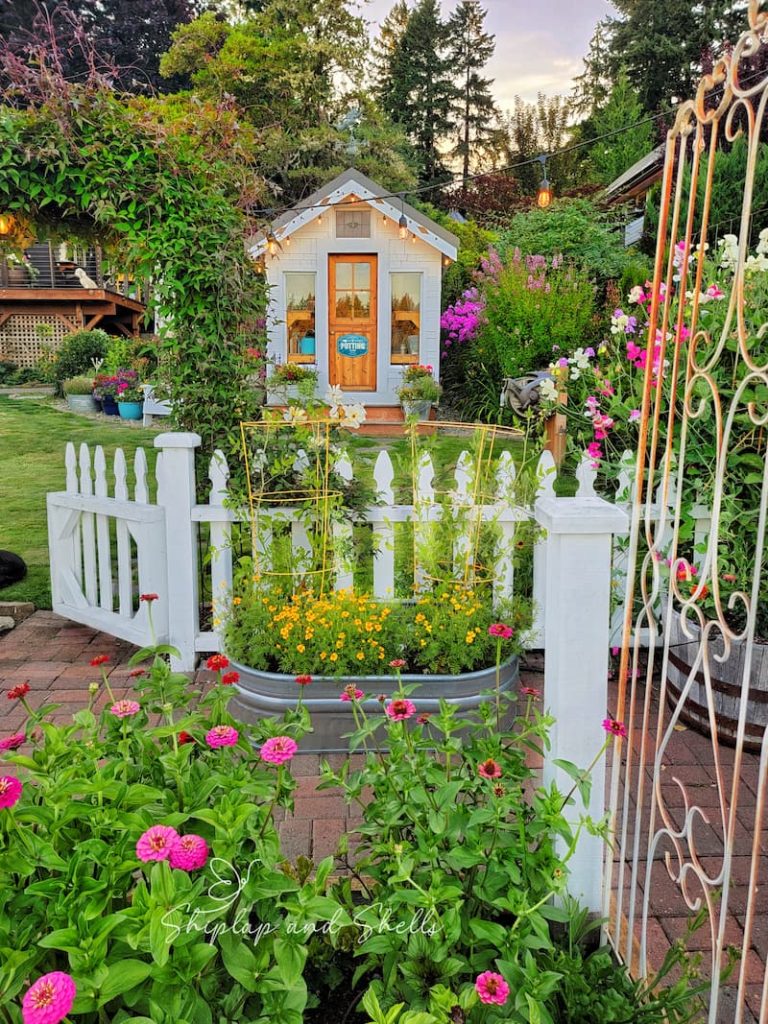
Do Seedlings Get Transplant Shock?
Yes, seedlings can experience transplant shock, a stress response that occurs when moving from indoors to outdoors or from a small container to a garden bed. You can witness this shock in many ways, including wilting, slowed growth, yellowing leaves, and even the death of the seedling.
The root system is quite vulnerable during transplanting, needing water and nutrients. Any damage to the roots, or even a significant change in conditions (such as temperature, humidity, or soil type), can disrupt the plant’s ability to function normally.
How Do You Prevent Transplant Shock in Seedlings?

How Long Does it Take for a Plant to Recover from Transplant Shock?
The recovery time from shock after transplanting flower seedlings can vary widely among plants, depending on several factors. This includes the plant type, the extent of root disturbance during transplanting, and the growing conditions before and after the transition.
Most plants show signs of recovery from transplant shock within a few weeks if given proper care.
Here are some general timelines and signs of recovery:
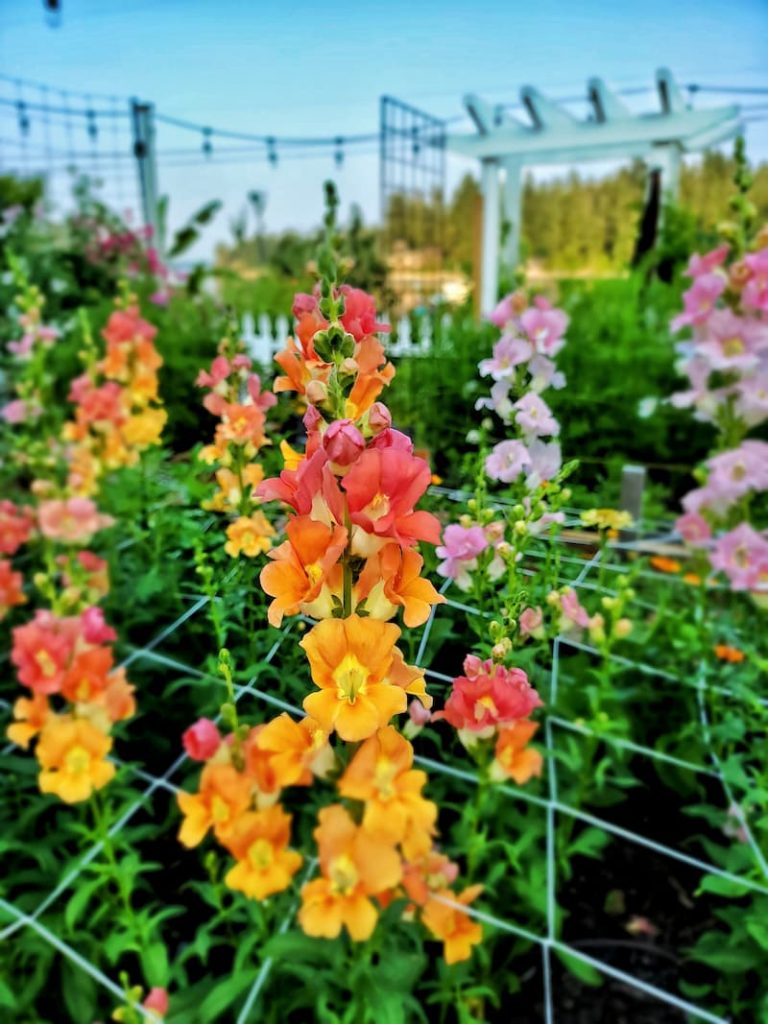
Why are My Seedlings Dying After Transplanting?
Here are several reasons why seedlings might die after being moved:
Seed Starting Supplies
Check out my favorite supplies and tools for starting seeds indoors. Whether you’re looking for grow lights or a seed starting mix, you’ll find what I use in my own greenhouse.
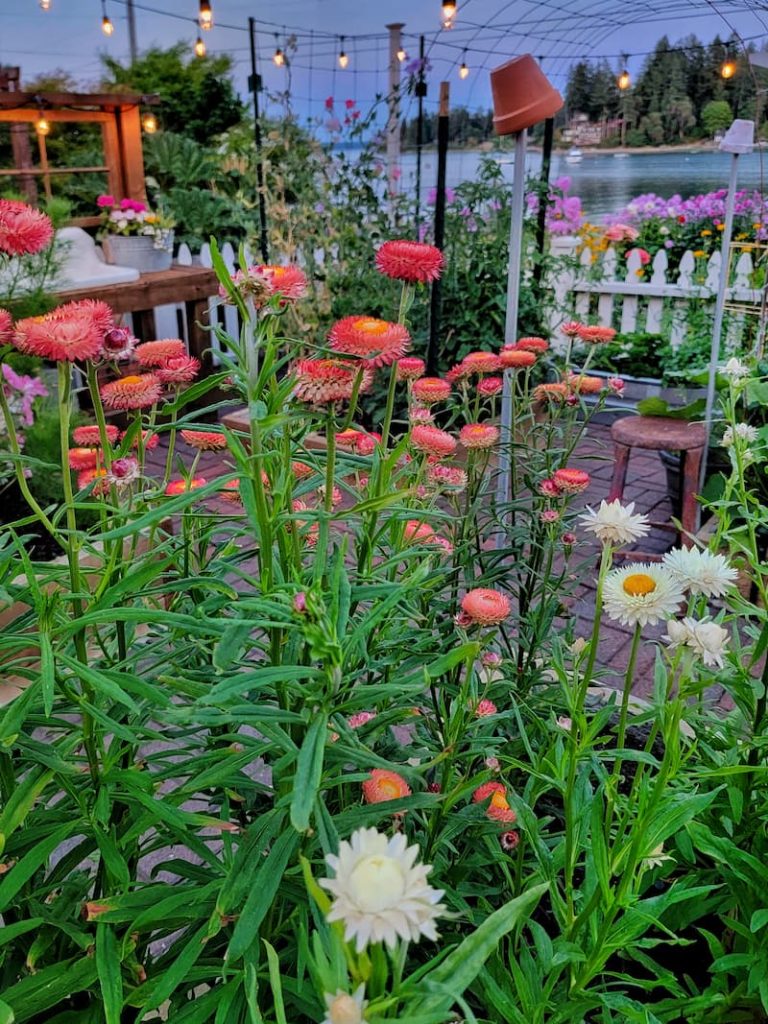
Final Thoughts About Transplanting Seedlings to the Garden
When transplanting flower seedlings, provide them with the care and conditions they need to thrive and watch them grow into vibrant, healthy cut flowers.
Practice patience, and don’t be discouraged by setbacks. Each seedling tells a story; every challenge is an opportunity to learn and grow as a gardener.
If you have any questions or additional suggestions, please share them in the comments below. And be sure to share this blog post link with anyone who may find these gardening tips useful.
Until next time,
Happy Gardening!

I’m a self-taught hobby gardener. Everything I share on my blog is my opinion and what has worked for me.
YOU MAY ALSO
Enjoy These Posts
Follow Me for More Inspiration
Shop my Amazon Storefront, LTK sources, and favorite home decor, garden, and lifestyle products. When you purchase from one of my links, I earn a small commission, which helps me continue sharing all the content you expect on my blog.
Be sure to follow me on Pinterest, Instagram, Facebook, TikTok and LIKEtoKNOW.it. Do you like gardening? Join my Facebook Gardening Tips & Tricks group.

